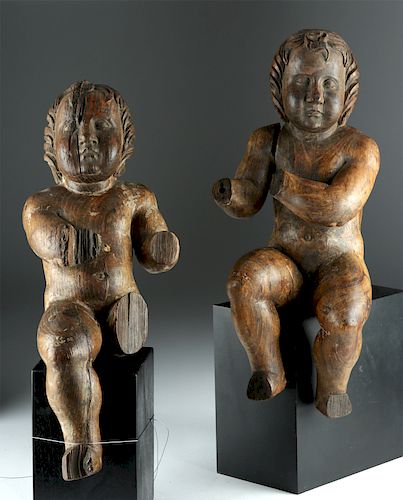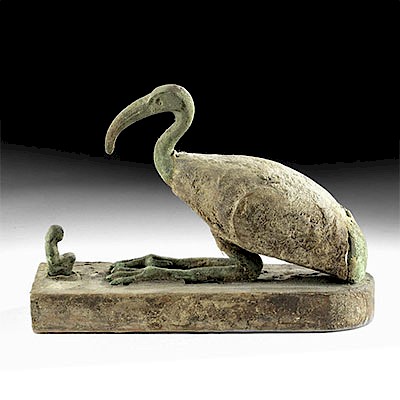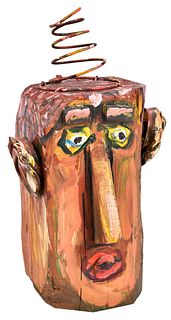17th C. German Baroque Wooden Cherubs (pr)
Lot 264
About Seller
Artemis Gallery
686 S Taylor Ave, Ste 106
Louisville, CO 80027
United States
Selling antiquities, ancient and ethnographic art online since 1993, Artemis Gallery specializes in Classical Antiquities (Egyptian, Greek, Roman, Near Eastern), Asian, Pre-Columbian, African / Tribal / Oceanographic art. Our extensive inventory includes pottery, stone, metal, wood, glass and textil...Read more
Estimate:
$3,000 - $4,800
Absentee vs Live bid
Two ways to bid:
- Leave a max absentee bid and the platform will bid on your behalf up to your maximum bid during the live auction.
- Bid live during the auction and your bids will be submitted real-time to the auctioneer.
Bid Increments
| Price | Bid Increment |
|---|---|
| $0 | $25 |
| $300 | $50 |
| $1,000 | $100 |
| $2,000 | $250 |
| $5,000 | $500 |
| $10,000 | $1,000 |
| $20,000 | $2,500 |
| $50,000 | $5,000 |
| $100,000 | $10,000 |
| $200,000 | $20,000 |
About Auction
By Artemis Gallery
Oct 31, 2019
Set Reminder
2019-10-31 10:00:00
2019-10-31 10:00:00
America/New_York
Bidsquare
Bidsquare : Fine Antiquities, Asian, Ethnographic Art
https://www.bidsquare.com/auctions/artemis-gallery/fine-antiquities-asian-ethnographic-art-4581
Our Halloween Day auction features classical antiquities, ancient and ethnographic art from cultures encompassing the globe, plus fine art. Artemis Gallery info@artemisgallery.com
Our Halloween Day auction features classical antiquities, ancient and ethnographic art from cultures encompassing the globe, plus fine art. Artemis Gallery info@artemisgallery.com
- Lot Description
Western Europe, probably Germany, Baroque period, ca. 17th century CE. A wonderful pair of hand-carved wooden cherub figures (also known as putti) covered in fabulous light and dark brown patina. Each cherub is dramatically depicted, with a serious expression on their childish faces, staring eyes, and coiffures full of curling, wavy hair draped to the napes of their necks. Each child-like figure is posed dramatically with a sense of dynamism and movement, their heads turned towards the viewer, arms raised, as if they were both holding something large. Cherubs depicted in this artistic manner are meant to induce a sense of whimsy and romance evocative of the imagery of Cupid, Eros, or simply infants in general. Size: 6.5" W x 17.625" H (16.5 cm x 44.8 cm).
The putto or cherub figure originated in the classical period and they are typically associated with child sarcophagi; they experienced a revival in the Renaissance period, especially in the remarkable intellectual and artistic environment of 15th century Europe and Italy in particular. The artist Donatello began creating artistic renditions of cherubs around this time, and they became common decorations in both religious and secular artworks.
Provenance: private Los Angeles County, California, USA collection
All items legal to buy/sell under U.S. Statute covering cultural patrimony Code 2600, CHAPTER 14, and are guaranteed to be as described or your money back.
A Certificate of Authenticity will accompany all winning bids.
We ship worldwide and handle all shipping in-house for your convenience.
#136004Larger figure has losses to hands, feet, body, and head, with one arm reattached with a long iron nail, and repair to one leg. Smaller figure has losses to hands, foot, one leg, and part of face. Both figures have surface wear and abrasions commensurate with age, several stable hairline fissures, and fading to some finer details. Light earthen deposits and nice brown patina throughout.Condition
- Shipping Info
-
All shipping is handled in-house for your convenience. Your invoice from Artemis Gallery will include shipping calculation instructions. If in doubt, please inquire BEFORE bidding for estimated shipping costs for individual items.
-
- Buyer's Premium



 EUR
EUR CAD
CAD AUD
AUD GBP
GBP MXN
MXN HKD
HKD CNY
CNY MYR
MYR SEK
SEK SGD
SGD CHF
CHF THB
THB















